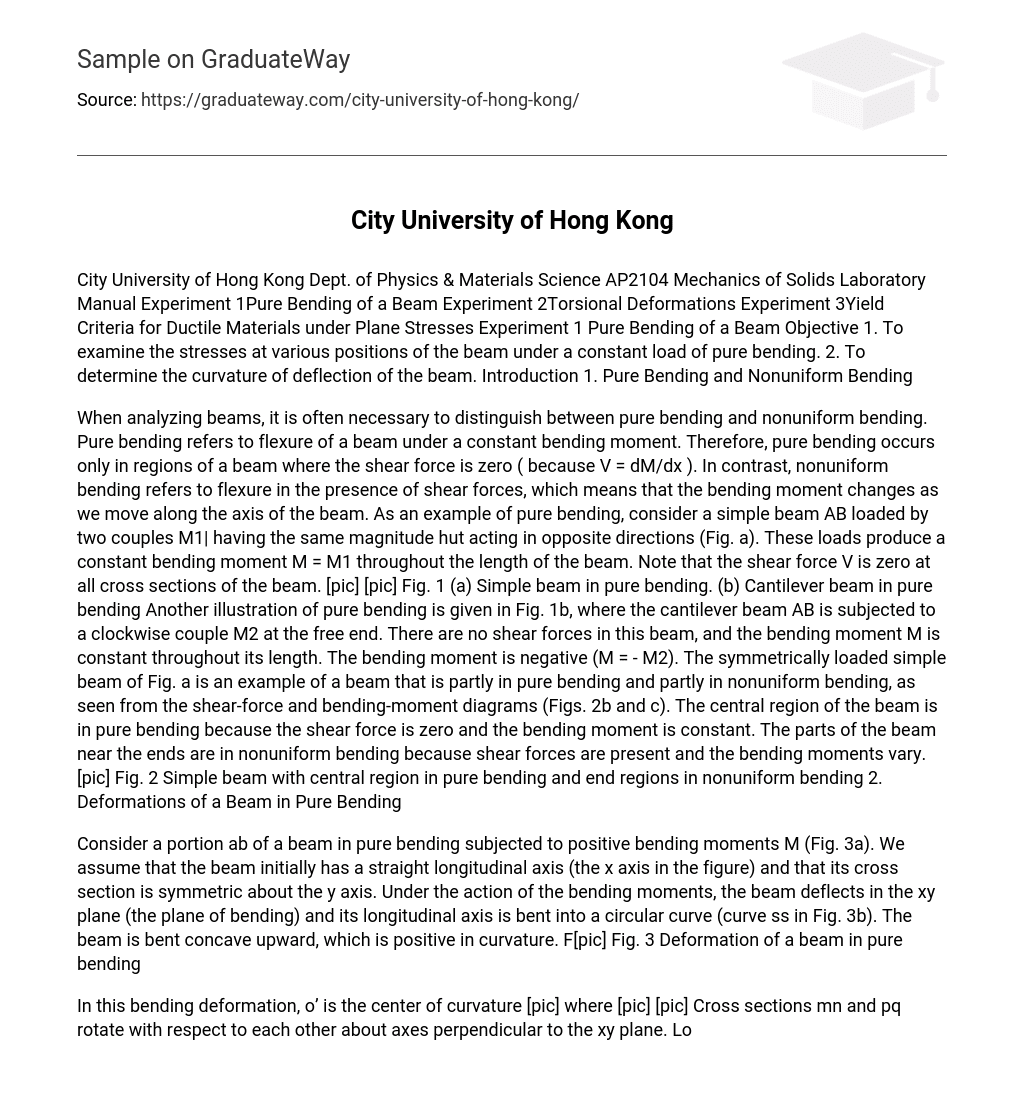Pure Bending and Nonuniform Bending
When analyzing beams, it is often necessary to distinguish between pure bending and nonuniform bending. Pure bending refers to flexure of a beam under a constant bending moment. Therefore, pure bending occurs only in regions of a beam where the shear force is zero ( because V = dM/dx ).
In contrast, nonuniform bending refers to flexure in the presence of shear forces, which means that the bending moment changes as we move along the axis of the beam. As an example of pure bending, consider a simple beam AB loaded by two couples M1| having the same magnitude hut acting in opposite directions. These loads produce a constant bending moment M = M1 throughout the length of the beam. Note that the shear force V is zero at all cross sections of the beam.
Cantilever beam in pure bending Another illustration of pure bending is given where the cantilever beam AB is subjected to a clockwise couple M2 at the free end. There are no shear forces in this beam, and the bending moment M is constant throughout its length. The bending moment is negative (M = – M2). The symmetrically loaded simple beam of a is an example of a beam that is partly in pure bending and partly in nonuniform bending, as seen from the shear-force and bending-moment diagrams.
The central region of the beam is in pure bending because the shear force is zero and the bending moment is constant. The parts of the beam near the ends are in nonuniform bending because shear forces are present and the bending moments vary.
Deformations of a Beam in Pure Bending
Consider a portion ab of a beam in pure bending subjected to positive bending moments M (Fig. 3a). We assume that the beam initially has a straight longitudinal axis (the x axis in the figure) and that its cross section is symmetric about the y axis. Under the action of the bending moments, the beam deflects in the xy plane (the plane of bending) and its longitudinal axis is bent into a circular curve. The beam is bent concave upward, which is positive in curvature.
Cross sections mn and pq rotate with respect to each other about axes perpendicular to the xy plane. Longitudinal lines on the convex (lower) part of the beam are elongated, whereas those on the concave (upper) side are shortened. Thus, the lower part of the beam is in tension and the upper part is in compression. There is a surface in which longitudinal lines do not change in length. This surface, shown by the dashed line ss in and, is called the neutral surface of the beam.
Maximum Stresses at a Cross Section
The maximum tensile and compressive bending stresses acting at any given cross section occur at points located farthest from the neutral surface. Let c1 and c2 denote the distances from the neutral surface to the extreme elements in the positive and negative y directions, respectively. Setting up :
- Strain gauges are adhered at the mid points of the top and bottom faces of the sample beam in order to record the compressive and tensile stresses arising from the pure bending.
- The sample beam is placed securely on the four-points bending fixture which is mounted on the cross-head of the tensile tester.
- The strain gauges are connected to the strain gauge indicator and its initial reading is zeroed.
- The digital camera was placed on an adjustable platform and set at an appropriate height to catch the front view of the beam.





